Sensor Sweep: Comics Code, Michael Moorcock, Drow, Heavy Metal
Monday , 24, February 2025 Sensor Sweep Leave a commentPulp (Rough Edges): This is a pulp that I own and read recently. That’s my copy in the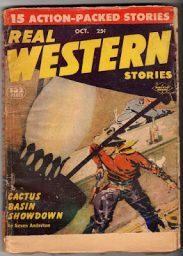 scan. I don’t know why the front cover is missing that strip at the bottom. That’s the way I got it. Luckily, the loss doesn’t detract too much from the cover by A. Leslie Ross. Not in the top rank of Ross’s work, to my mind, but his covers are always worthwhile. I’ll put a scan of the whole cover from the Fictionmags Index at the end of this post.
scan. I don’t know why the front cover is missing that strip at the bottom. That’s the way I got it. Luckily, the loss doesn’t detract too much from the cover by A. Leslie Ross. Not in the top rank of Ross’s work, to my mind, but his covers are always worthwhile. I’ll put a scan of the whole cover from the Fictionmags Index at the end of this post.
James Bond (Rageaholic):No Time to DEI – Amazon Buys Bond!
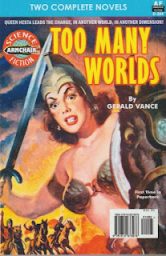 Science Fiction (Vintage Pop Fictions): Gerald Vance’s Too Many Worlds was published in Amazing Stories in December 1952. Except that there was no such person as Gerald Vance. It was a Ziff-Davis Publishing house name used by lots of writers. Nobody is sure of the identity of the author of this book although Berkeley Livingston has been suggested. It does have a very similar feel to Livingston’s Queen of the Panther World, and it has the same flaws which we’ll get to later.
Science Fiction (Vintage Pop Fictions): Gerald Vance’s Too Many Worlds was published in Amazing Stories in December 1952. Except that there was no such person as Gerald Vance. It was a Ziff-Davis Publishing house name used by lots of writers. Nobody is sure of the identity of the author of this book although Berkeley Livingston has been suggested. It does have a very similar feel to Livingston’s Queen of the Panther World, and it has the same flaws which we’ll get to later.
Comic Books (Conan Chronology): Those classic Conan the Barbarian comics by Roy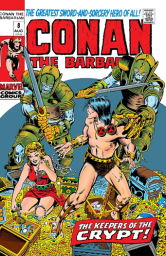 Thomas, Barry Windsor-Smith, and John Buscema are excellent, but they’re definitely more buttoned-up than their source material. I wouldn’t hesitate to hand one of those Conan the Barbarian issues to a 9 or 10 year-old since their fantasy violence isn’t overly intense, at least not any more than a He-Man or Thundercats cartoon.
Thomas, Barry Windsor-Smith, and John Buscema are excellent, but they’re definitely more buttoned-up than their source material. I wouldn’t hesitate to hand one of those Conan the Barbarian issues to a 9 or 10 year-old since their fantasy violence isn’t overly intense, at least not any more than a He-Man or Thundercats cartoon.
Pulp (Comics Radio): The second work of prose fiction (I’ll be skipping a few poems in the issue) in the January 10, 1926 issue of Adventure is the short story “Seeing it Through,” by Jack Rendal. Rendel was a fairly regular contributer to Adventure from 1926-1928 (7 articles and 4 short stories), but I can’t find any credits for him after that. That’s too bad, because this story, at least, is excellent.
Interview (Monsters, Madness, and Magic): Join Justin and special guest co-host and editor of DMR Books D.M. Ritzlin as they chat with legendary writer Michael Moorcock about the history of the Runestaff, the origins of Dorian Hawkmoon, Count Brass, the influence of the county of Cornwall on Prince Corum, and more!
Pastiche (Paperback Warrior): Jonathan Mayberry has earned five Bram Stoker awards during his long and prolific writing career. His books include series titles like Joe Ledger, Rot & Ruin, Dead of Night, and Kagan the Damned. The San Diego author joined Titan’s round table of authors in 2023 to write fiction based on characters created by Robert E. Howard. Mayberry’s contribution is the ebook Solomon Kane: The Hound of God.
during his long and prolific writing career. His books include series titles like Joe Ledger, Rot & Ruin, Dead of Night, and Kagan the Damned. The San Diego author joined Titan’s round table of authors in 2023 to write fiction based on characters created by Robert E. Howard. Mayberry’s contribution is the ebook Solomon Kane: The Hound of God.
Tolkien (Auron MacIntyre): Every few years, progressive “Lord of the Rings” fans rediscover that J.R.R. Tolkien was a conservative Catholic who supported Francisco Franco during the Spanish Civil War. This clashes with their current obsession over “media literacy” and intent of the author when it comes to interpreting works of art.
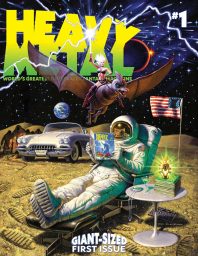 Magazines (CBR): The dark fantasy and science fiction anthology magazine Heavy Metal will make its triumphant return with a brand new super-sized debut issue. A Kickstarter for the project will kick off early next month with special rewards for fans.
Magazines (CBR): The dark fantasy and science fiction anthology magazine Heavy Metal will make its triumphant return with a brand new super-sized debut issue. A Kickstarter for the project will kick off early next month with special rewards for fans.
Art (Book Graphics): The Mabinogion art by Alan Lee.
Edgar Rice Burroughs (Black Gate): Above are my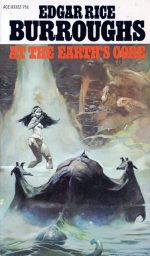 Edgar Rice Burroughs Pellucidar books. Tarzan at the Earth’s Core goes with this series as well, although I included it in Part II of this series, with my Tarzan collection. In these stories, Pellucidar is a hollow area at the center of the Earth. There are openings into it at the North and South poles, but in the initial book, At the Earth’s Core, an American named David Innes reaches the interior by riding inside a giant drill.
Edgar Rice Burroughs Pellucidar books. Tarzan at the Earth’s Core goes with this series as well, although I included it in Part II of this series, with my Tarzan collection. In these stories, Pellucidar is a hollow area at the center of the Earth. There are openings into it at the North and South poles, but in the initial book, At the Earth’s Core, an American named David Innes reaches the interior by riding inside a giant drill.
Tolkien (Master Samwise): Today we dive into one of the most controversial decisions Peter Jackson made in his movies: Faramir. Let’s talk about why Jackson made the changes that he did, why they were ultimately shortsighted if understandable, and why Faramir as he exists in Tolkien’s novel is so, so important.
Fantasy (Monsters & Manuals): I love most of Jack Vance’s main series but the sheer pleasure I get from losing myself in the Lyonesse books can’t really be put into words; if you had a gun to my head I would say it’s a bit like what it must feel like to snuggle under a warm duvet with Teri Hatcher from circa 1994 with snow falling outside and a nice bottle of single malt to keep you company.
Fiction (Goodman Games): Born as Alice Mary Norton in 1912, Norton started writing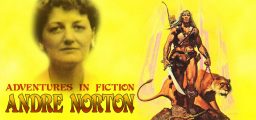 while she was still in high school in Cleveland, Ohio. In fact, she completed her first novel while still attending high school, though it was not published until later in 1938. Wishing to pursue writing as a career, in 1934 she had her name legally changed to Andre Alice Norton, and adopted several male-sounding pen names so as to prevent her gender from becoming an obstacle to sales in the first market she wrote for: young boys literature.
while she was still in high school in Cleveland, Ohio. In fact, she completed her first novel while still attending high school, though it was not published until later in 1938. Wishing to pursue writing as a career, in 1934 she had her name legally changed to Andre Alice Norton, and adopted several male-sounding pen names so as to prevent her gender from becoming an obstacle to sales in the first market she wrote for: young boys literature.
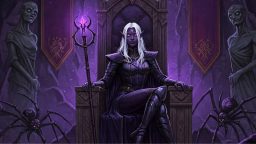 D&D (Dungeons & Dragons Fan): The Drow (also known as Dark Elves) have been a staple of Dungeons & Dragons since the earliest edition of the game. Over the years, they’ve also become incredibly popular, thanks in large part to the legendary ranger Drizzt Do’Urden. In most of their appearances however, Drow have been portrayed primarily as innately evil beings driven by greed, hatred and a fanatical devotion to the spider goddess Lolth.
D&D (Dungeons & Dragons Fan): The Drow (also known as Dark Elves) have been a staple of Dungeons & Dragons since the earliest edition of the game. Over the years, they’ve also become incredibly popular, thanks in large part to the legendary ranger Drizzt Do’Urden. In most of their appearances however, Drow have been portrayed primarily as innately evil beings driven by greed, hatred and a fanatical devotion to the spider goddess Lolth.
Cinema (Silver Key): Utopias cannot survive contact with the world of commerce. It’s a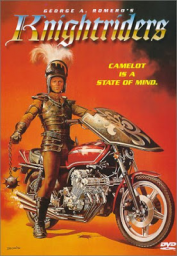 message delivered in brutal fashion in the catastrophic ending of George Romero’s Knightriders (1981). Idealism meets the hurtling steel of a freight truck, alternative counterculture going under the wheels of the unstoppable economic engine of the 1980s.
message delivered in brutal fashion in the catastrophic ending of George Romero’s Knightriders (1981). Idealism meets the hurtling steel of a freight truck, alternative counterculture going under the wheels of the unstoppable economic engine of the 1980s.
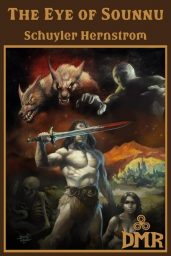 Fiction (Black Gate): The concept of barbarism vs. civilization is a topic that Robert E. Howard often explored in his incredibly crafted fiction. Other authors, many inspired by Howard, have explored the concept through their own creations. Notable among these is modern sword-and-sorcery author Schuyler Hernstrom, whose collection of short stories, The Eye of Sounnu, was published by DMR Books.
Fiction (Black Gate): The concept of barbarism vs. civilization is a topic that Robert E. Howard often explored in his incredibly crafted fiction. Other authors, many inspired by Howard, have explored the concept through their own creations. Notable among these is modern sword-and-sorcery author Schuyler Hernstrom, whose collection of short stories, The Eye of Sounnu, was published by DMR Books.
Firearms (Frontier Partisans): One class of rifle still requires iron sights: the Scout Rifle. The Scout Rifle concept was promulgated by the late Col. Jeff Cooper, who was certainly aware of the American Scout in Africa, Frederick Russell Burnham. There’s no doubt in my mind that Cooper had a modern-day Burnham in mind when he proposed the Scout Rifle.
Scout Rifle. The Scout Rifle concept was promulgated by the late Col. Jeff Cooper, who was certainly aware of the American Scout in Africa, Frederick Russell Burnham. There’s no doubt in my mind that Cooper had a modern-day Burnham in mind when he proposed the Scout Rifle.
Edgar Rice Burroughs (Dark Worlds Quarterly): The city of Opar, with its beautiful queen La, and its descendants of Atlantis, first appeared in The Return of Tarzan (New Story Magazine, June-December 1913). This was the first sequel to the hugely successful Tarzan of the Apes and All-Story rejected it. That’s why it appeared at New Story. And if you look at the book objectively, it is episodic and not a great book. But if you understand the reading public, it was a major mistake. Readers wanted more Tarzan and they didn’t care if the book was a masterpiece.
Horror (The Obelisk): In the June 1983 issue of the Twilight Zone magazine,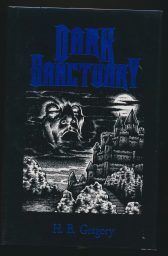 the great neo-pulp author Karl Edward Wagner published his “39 List” which set out to index the very best supernatural, non-supernatural, and science fiction horror novels ever written. Wagner’s primary focus was on lesser-known and obscure works, some of which were decades out-of-print at the time. The point was to revive and resuscitate interest in titles and authors from the halcyon days of speculative fiction.
the great neo-pulp author Karl Edward Wagner published his “39 List” which set out to index the very best supernatural, non-supernatural, and science fiction horror novels ever written. Wagner’s primary focus was on lesser-known and obscure works, some of which were decades out-of-print at the time. The point was to revive and resuscitate interest in titles and authors from the halcyon days of speculative fiction.
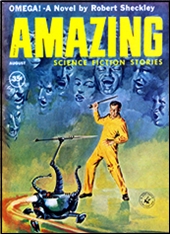 Science Fiction (Mystery File): ROBERT SHECKLEY – The Status Civilization. Dell 8249; paperback; 1st printing thus, October 1968; cover art by Podwil. Published earlier as a two-part serial in Amazing SF. Aug-Sept 1960 as “Omega!.” First book publication: Signet S1840, paperback, September 1960.
Science Fiction (Mystery File): ROBERT SHECKLEY – The Status Civilization. Dell 8249; paperback; 1st printing thus, October 1968; cover art by Podwil. Published earlier as a two-part serial in Amazing SF. Aug-Sept 1960 as “Omega!.” First book publication: Signet S1840, paperback, September 1960.
Western (Rough Edges): Les Savage Jr. was a highly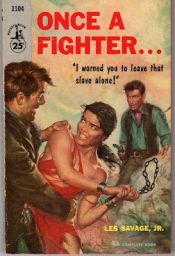 regarded Western writer during his lifetime, a career cut short when he died in 1958 at the age of 35 from a heart attack brought on by diabetes. Many of his novels and novellas are still in print, as resurrecting Savage’s work from the pulps and elsewhere was one of the most successful projects carried out by editor/agent Jon Tuska and his Golden West Literary Agency.
regarded Western writer during his lifetime, a career cut short when he died in 1958 at the age of 35 from a heart attack brought on by diabetes. Many of his novels and novellas are still in print, as resurrecting Savage’s work from the pulps and elsewhere was one of the most successful projects carried out by editor/agent Jon Tuska and his Golden West Literary Agency.
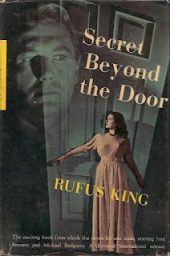 Gothic (Vintage Pop Fictions): Rufus King’s crime novel Museum Piece No 13 was published in 1945 and was later retitled Secret Beyond the Door to tie in with Fritz Lang’s movie adaptation. Rufus King (1893-1966) was an American crime writer whose work belongs to the fair-play puzzle-plot genre that blossomed during the golden age of detective fiction. He is best-known for his excellent Lieutenant Valcour mysteries.
Gothic (Vintage Pop Fictions): Rufus King’s crime novel Museum Piece No 13 was published in 1945 and was later retitled Secret Beyond the Door to tie in with Fritz Lang’s movie adaptation. Rufus King (1893-1966) was an American crime writer whose work belongs to the fair-play puzzle-plot genre that blossomed during the golden age of detective fiction. He is best-known for his excellent Lieutenant Valcour mysteries.
Horror (Pulp Super Fan): I have previously posted on Basil Copper (1924-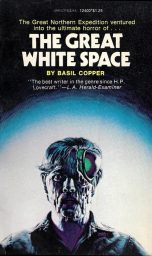 2013) due to his Solar Pons stories. But my first exposure to him was obtaining one of his first novels inspired by the Cthulhu mythos: The Great White Space, which first appeared in 1974.
2013) due to his Solar Pons stories. But my first exposure to him was obtaining one of his first novels inspired by the Cthulhu mythos: The Great White Space, which first appeared in 1974.
Cinema (Rough Edges): Watching old B-Western movies on TV as a kid, I always liked Gene Autry, although to be honest I preferred Roy Rogers to Gene. But the appeal of their movies was largely the same and since many of the same writers and directors and supporting actors were involved, that’s not surprising. As a result, though, there are more of Gene’s movies that I’ve never seen, or at least don’t remember.
Myth (Stories Mythology & Fiction): Dive into the heart of Welsh mythology with this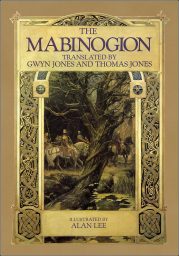 epic exploration of the Red Dragon legend! From ancient prophecies to modern pop culture, discover how this fiery symbol has shaped Welsh identity for centuries. We’ll uncover the origins of the dragon myth, its battle with the white dragon, and how it became the beloved national emblem of Wales.
epic exploration of the Red Dragon legend! From ancient prophecies to modern pop culture, discover how this fiery symbol has shaped Welsh identity for centuries. We’ll uncover the origins of the dragon myth, its battle with the white dragon, and how it became the beloved national emblem of Wales.
 Fiction (Silver Key): A very brief review of Ardor on Aros, by andrew j. offutt (1973). (some spoilers follow)The good Great cover by Frank Frazetta, though unfortunately has nothing to do with the contents of the book (save perhaps symbolically, and I’m being generous).
Fiction (Silver Key): A very brief review of Ardor on Aros, by andrew j. offutt (1973). (some spoilers follow)The good Great cover by Frank Frazetta, though unfortunately has nothing to do with the contents of the book (save perhaps symbolically, and I’m being generous).
Please give us your valuable comment